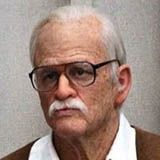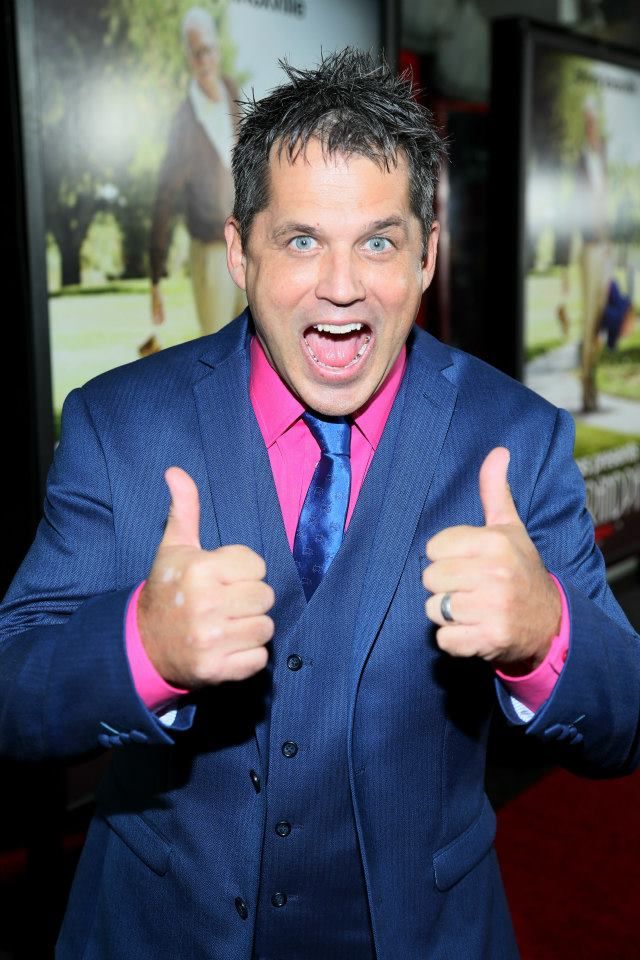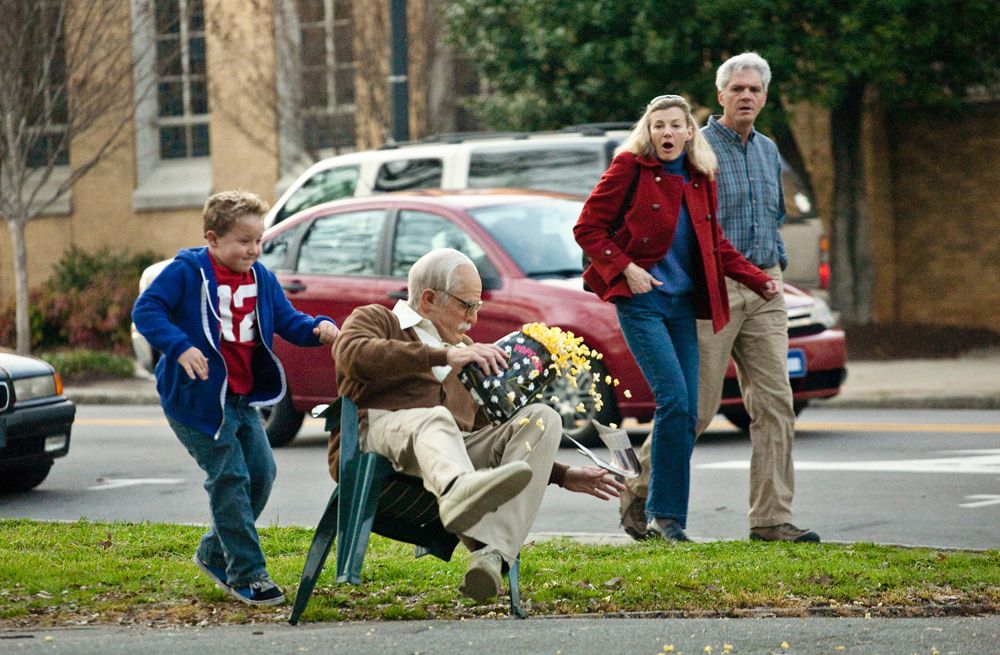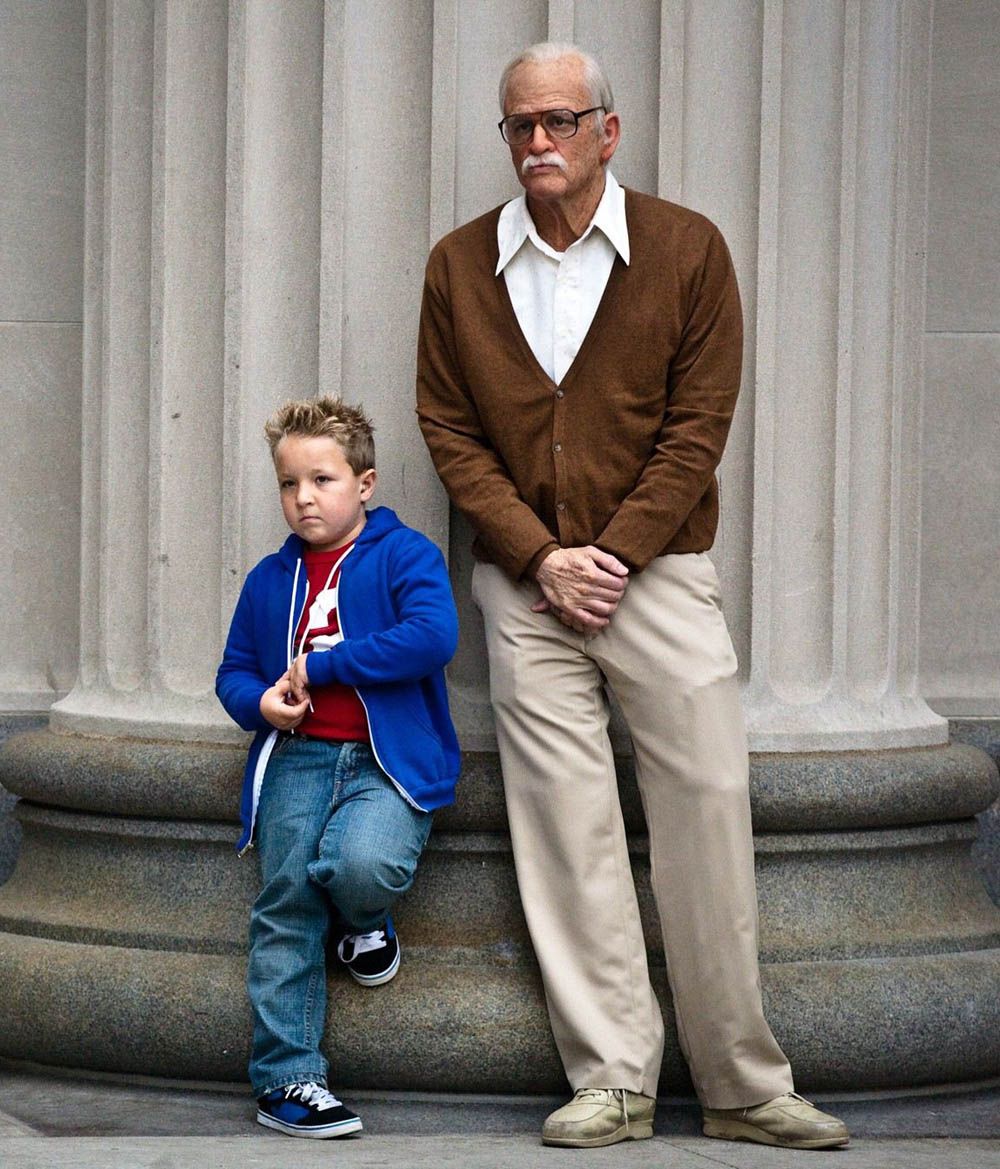As of last week, the Jackass franchise can call itself Oscar-nominated, for best make-up, thanks to the amazing work done on Johnny Knoxville to make him look like septuagenarian Irving Zisman in Jackass Presents: Bad Grandpa. But even before the series found institutional legitimacy, creators Spike Jonze and Jeff Tremaine were challenging the way entertainment was made, and not just by subjecting their heroes to very real, very dangerous and very stupid physical challenges.
The franchise’s combination of complex set pieces, good-natured pranks and real-world settings has continued to evolve since its inception in 2000, and achieved its apotheosis last year with the release of its first Academy Award-nominated project, the story of Zisman and his grandson as they trek across the country, finding mischief wherever they stop.
Tremaine spoke with Spinoff Online late last week about his work on Bad Grandpa, which he said posed unprecedented challenges for the filmmakers, even among their increasingly ambitious – and violent – scenarios. In addition to talking about making the transition to a form of fictional storytelling, Tremaine discussed the assembly and coordination of the sequences that would comprise its “plot,” described the contributions of Her filmmaker Jonze, and then reflected on where to take the Jackass series from here.
Spinoff Online: What I’ve always liked most about Jackass is that essentially it’s good-natured stupidity, mostly perpetrated on one another. How careful did you have to be when conceiving the idea to make sure this was as fun, and didn’t turn into mean pranks?
Jeff Tremaine: You’ve touched on something that is so important to us, and that’s the spirit of what we do. Even though this movie is a lot of pranks and silly, crazy stuff in front of people, it’s not about making those people look stupid or bad. It's about them just being normal people and we are doing outrageous shit and they are just acting appropriately, usually. None of us on our team are really into being mean to people, other than each other – and we do torture each other, I will say. So yeah, the spirit of that is real important to us, and to our whole brand, I’d say.
How tough was it to conceive a narrative and then slot these set pieces into that story so that, say, the pageant would be the pay off everything was building to?
It’s interesting. This idea of breaking Irving off and doing a whole movie about Irving was daunting to start to think about. So, kind of the way Knoxville and I attacked it was to write it more like little Jackass bits, just think of funny scenarios to put him in. this is before we even talked about “what’s the story” – it was just writing funny bits. But then as we go into it, that was sort of the idea, just this series of little bits, and string them along with a loose narrative. But once we started writing the story, that became the most important thing to us. And once we started shooting, we realized that you can actually build these pranks into story beats versus the pranks just being the pranks and then we fill in the gaps with story. And we shot the funeral early on, and we shot the funeral scene where there’s a big stunt in the middle where the body falls down, but really that whole scene is the plot of the movie – it’s loaded with story. And it was so satisfying to watch that unfold, and it’s just Knoxville, the little boy and the little boy’s mother are the only people that know what the hell’s going on in the room, with all of us hiding behind walls. So that’s when we really committed to we need to stop now and refocus on writing the story and writing all of the funny ideas, build them into the story a lot more than they were.
As far as the beauty pageant living as the last thing, that actually didn’t originally live at the end of the movie where it is now. It was supposed to be the last funny thing they do together before he drops the boy off to his dad. And it was there the movie sort of peaked, and it sort of got serious, and we love the biker scene drop-off, but it’s almost not even funny – it’s more of a dramatic scene. So we started screening it, and the Jackass way of doing things is we take our funniest bit and put it at the end of the movie, whatever it is. We never have it planned, and Jackass is so fun because it’s modular – you can just lift any bit out and shuffle it around however you want. But this movie wasn’t the same, so we had to kind of cheat the heads and tails to fit it where we did. But it’s only made the movie work where it didn’t quite work where we intended it. So we were sort of taking a lesson we learned from Jackass and applying it to this movie.
You create these great set pieces, like Irving catapulting through a plate glass window. But how tough is it to push yourself cinematically when you, one, have less control over the environment where you’re filming, and two, there are a number of people who will need to know what’s going on?
This movie was eye-opening for me. I think we pioneered a lot of shooting more of a real movie – it’s totally hidden cameras, there’s no device where the camera is out – so we had to figure out ways to make it cinematically look good but still have the cameras completely hidden. And to me it got exciting and scary to do this because you never know how people are going to react, and then if they do react exactly how you want them to, you don’t know that they’re going to sign a release form at the end of the day and want to be in the movie. So there’s a lot of extra stress on something like this versus a scripted movie – I mean, you can control all of those elements – but that’s what was so fun about this as well.
You brought up that scene where Knoxville rides that rocket through the window. To me, that’s probably the most complicated shot we’ve ever done, and one, because it’s a real stunt, but a stunt set in a public setting where we wanted people to be as close to it as possible, but not close enough to et hurt by the thing. And then we were shooting it, both inside and outside, so we had to control both sides of it – where he landed and where he took off from. And it was really complicated, because the store was open for business, and it was a magical location for us – the fact that it was this giant thrift store that had mattresses naturally in the window. We were able to prank the employees, because those mattresses actually were there, so we came in in the middle of the night with the owner and shuffled a few things around, but really, that store looked how it looked to the employees – we were able to prank the employees and the customers on that one. So it was really a tricky one.
Was there anything that you conceived for Irving that ended up just flopping, either in the conception phase or logistically when you tried to make it happen?
We shot a ton of stuff – there’s a lot of hilarious things we shot that didn’t make the movie. And then there were a few really funny ideas that we didn’t get around to shooting for one reason or the other. Sometimes it was because the story ended up taking a turn that we just couldn’t make that fit, or we ran out of time. Like the unrated version has about ten minutes of stuff that didn’t make the theatrical version that we put back in, and now we’re working on a Bad Grandpa .5, where you see Spike Jonze in the credits and he’s dressed as an old woman, and he was playing a character, “the one that got away,” Irving’s old fling Gloria. We have hilarious stuff with that, but when we had it cut into the story, it sort of muddied up the relationship between Jackson and Irving, and I think when we started fine-tuning the movie, it really became more important to spend as much time with Irving and Billy – so Spike hit the cutting room floor.
Speaking of Spike, what does he bring to these projects now? Obviously he was integral to creating Jackass, but when he’s working on stuff like Her, do you feel like that work has influenced the material you created for Bad Grandpa?
Spike has always had a vital role in Jackass, and when he gives us notes, it makes everything we do a lot smarter. He had a ton to do with shaping this story and getting our story right before we even started plugging the pranks into it. So we took full advantage of Spike’s storytelling ability, and he had a ton of insights for us that helped a lot. But he’s done that all through all of the Jackass stuff – he’s always had a lot to say about keeping us on track and making it so much better.
How much does this hybrid half documentary, half fictional filmmaking style fulfill you artistically, and how interested are you in venturing into more straightforward, fictional filmmaking projects?
It’s an interesting question, because I think we kicked the door open on this whole idea of – I wouldn’t say this is half documentary. It’s 100 percent fiction other than it’s set in the real world, so I mean, I guess in a way it’s documentary, but we are controlling the story 100 percent – other than when you have to improvise when someone acts a little different than you anticipate. You have to go with it. But the idea of this, I think we’ve kind of kicked open a door, and am I intrigued to try it again? I am. It’s hard and it’s really stressful because you don’t control all of the elements. To me, doing something scripted seems a lot calmer, and I kind of want to try it (laughs), where you control everything. But in the same sense, this was an eye-opening experience for me, and I am very intrigued to try it again – not necessarily with Irving. But just the whole broad concept of a scripted feature set in the real world with real people participating without knowing.
Jackass Presents: Bad Grandpa arrives Tuesday on Blu-ray and DVD.




